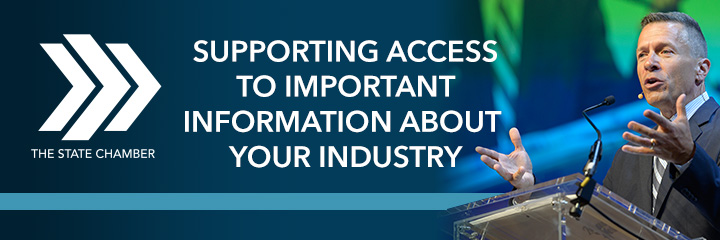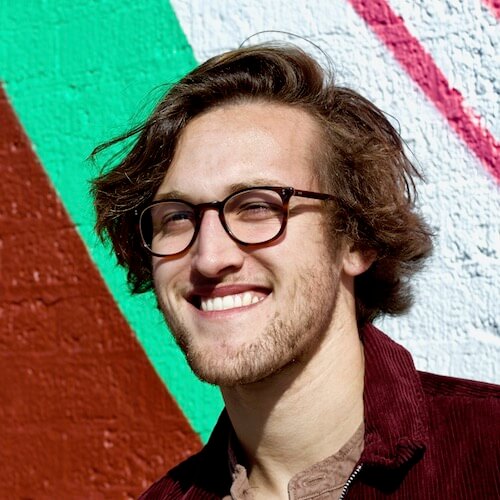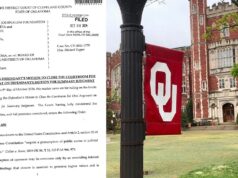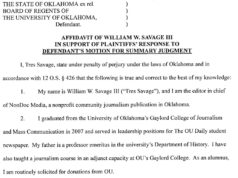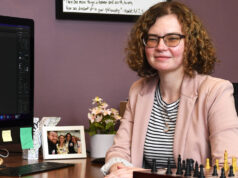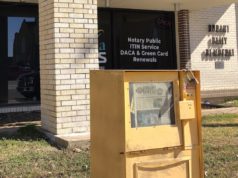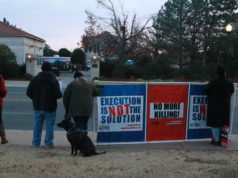
It happened almost in the blink of an eye: A video surfaced of University of Oklahoma fraternity members singing a racist chant. OU President David Boren ordered the fraternity to leave campus within two days. Protests erupted throughout campus. National media descended, questioning how such “textbook-style racism” could still exist in places as unassuming as the University of Oklahoma.
The 2015 OU SAE scandal that rocked national headlines saw something unusual: a university president who immediately and vehemently tackled the issue head-on, calling the video “disgraceful” and immediately dissolving the fraternity. Many praised Boren’s swift and decisive role in the fallout, however, his actions in this instance also indicate his media fluency.
With July 1 set to begin the tenure of OU’s next president, James Gallogly — a former executive with ConocoPhillips and the ex-CEO of LyondellBasell — it’s worth comparing Boren’s successor to the man himself and how Gallogly, a corporate leader likely accustomed to prepared statements, will contrast with Boren’s outspoken media approach.
“[Gallogly] will have his own style, and I won’t try to predict what that will be,” said Nick Jungman, director of student media at OU. “He’s a former Fortune 500 executive, and he’s dealt with the media. I predict he’ll be very media savvy as well … and I’m very optimistic.”
In written answers to questions provided by NonDoc, Gallogly affirmed that his experience as corporate executive and CEO will not detract from his media tactics but rather supplement them.
“I believe many of the same techniques will work, as I tried hard not to be a top-down executive,” Gallogly wrote. “The most effective corporate or academic communicators must think in terms of an inclusive circle versus a traditional pyramid.”
Gallogly: ‘The University of Oklahoma is a special place’
Gallogly’s experience as CEO of LyondellBasell — where he steered the company out of Chapter 11 bankruptcy and reported $45.6 billion in revenue for the company with earnings of $4.1 billion in 2014 — could forecast an emphasis on more science- and engineering-related programs rather than social science-related courses. His $30 million donation to the university in tandem with Charles and Peggy Stephenson to various engineering programs could signify his intent on focusing on more physical sciences.
“We’re committed to providing more opportunities for more students, whether in media or elsewhere, to help them see the possibilities for themselves — including student media and journalism,” Gallogly told NonDoc. “As a point of interest, two of my three daughters have media-related degrees.”
In his opening statement to the university, Gallogly pledged to make OU one of the leading universities in engineering, on-par with the “Purdues and MITs” of the world.
“The University of Oklahoma is a special place — an institution I love,” Gallogly said. “We will collectively harness the ‘Sooner Spirit’ to become a pacesetter academic institution. We will build on the great legacy of David Boren and use that strong foundation as our launchpad to greatness.”
Student media in focus
Before being president of OU, Boren served as a U.S. senator from 1979 to 1994 and also acted as Oklahoma’s 21st governor. Gaylord College of Journalism and Mass Communication Dean Ed Kelley said he believes Boren’s headfirst media approach while president was derived from his career as a politician.
“As governor, he dealt with all kinds of crises during his four years in office,” Kelley said. “No doubt he learned the importance of decisiveness and speaking in a clear and consistent voice. That trial-by-fire experience, in the 1970s, served him very well when the SAE incident occurred 40 years later.”
Besides being well-versed in media and public speaking, Boren has supported student-run media as well as journalism education. In 2000, Boren oversaw the $22 million donation to OU from Edward L. Gaylord, the former publisher of The Oklahoman, and his family. With the help of David Dary, the head of the H.H. Herbert School for Journalism and Mass Communication, the Gaylord College of Journalism and Mass Communication was built, and Boren personally asked Kelley to come on board as dean three years ago.
“Believe me, he reads The Daily, and while he doesn’t always like what has been written, he has been steadfast in the need for a student-run media outlet on campus,” Kelley said.
According to Jungman, Boren has taken the OU Daily very seriously since he became president in 1994, going so far as to sit down with editorial staff on numerous occasions to provide personal financial support as the student newspaper has faced declining advertising over the years.
Jungman acknowledges that Gallogly has big shoes to fill, but expects he is up to the task.
“When I was a journalism student at OU 25 years ago from 1990 to 1994, this was not a great journalism program,” Jungman said. “The university has invested in journalism, and I’m sure that President Gallogly will see that and do everything he can to make that investment continue to pay off.”

